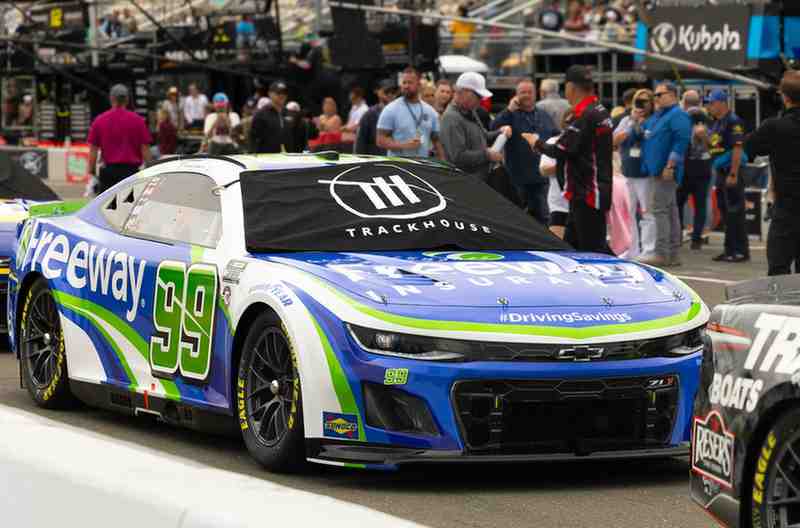If your car insurance renewal made your jaw drop this year, you’re not alone. Across the country, drivers are facing higher premiums, even when they haven’t had accidents or changed vehicles. The culprit? A mix of inflation, rising repair costs, and a still-strained supply chain that’s making everything from parts to labor more expensive.
As someone who’s spent years studying and working inside this industry, I’ll break down why this is happening and what you can realistically do about it.

The Real Reason Your Premium Went Up
Car insurance is directly tied to the cost of repairing and replacing vehicles. When those costs rise, insurers have to adjust premiums to stay solvent. Inflation has hit every part of that chain: auto parts, labor, materials, and even replacement vehicle costs.
For example, when a bumper that once cost $500 now costs $1,200 and takes three weeks to arrive, insurers are paying more on every claim. Those higher payouts eventually show up in your renewal notice.
Why Auto Parts Cost More Than Ever
Let’s start with the hardware. Modern cars are packed with complex tech—sensors, cameras, and computers that make even small fender benders expensive. A cracked bumper on a 2018 sedan might involve recalibrating lane-assist systems or radar sensors, turning what used to be a $700 job into a $3,000 repair.
But technology isn’t the only reason. Parts are more expensive because:
- Supply chains are still catching up from the pandemic era.
- Manufacturing and shipping costs have surged worldwide.
- Many components now come from overseas suppliers facing their own inflation.
These combined pressures mean repair shops are waiting longer and paying more for every part they order.
If you’ve ever wondered why your claim seems to take forever, that’s part of the story.
The Hidden Impact of Labor Cost Increases
Labor is another major factor. Skilled auto technicians are in short supply, and the ones available are commanding higher wages. Repairing a modern car isn’t simple—it often requires software updates, recalibration tools, and certifications for electric and hybrid systems.
Shops can’t afford to lose good talent, so they raise wages, and those costs get passed along. Even if you drive an older model, you’re still affected because overall shop rates have increased across the board.
It’s not just wages either. The time it takes to complete repairs has grown because of part shortages. Every extra day your car sits in the shop can add to rental coverage costs that insurers must pay.
Supply Chain Issues That Haven’t Fully Recovered
You’d think by 2025, supply chain problems would have settled down, but the reality is more complicated. Global transport remains unpredictable, and specific parts—especially electronics—are still facing long delays.
That delay has a ripple effect:
- Insurers must pay for longer rental car periods.
- Repairs take longer, driving up labor hours.
- Policyholders wait weeks for claim completion, increasing frustration.
In short, the system is still catching up, and you’re footing part of the bill.
Why Insurance Companies Are Raising Premiums
When insurers calculate premiums, they look at historical claim data, costs of parts and labor, and predicted losses. Inflation has pushed all those inputs higher.
Even if you’ve had zero claims, your premium may rise because the overall cost to insure vehicles in your area has gone up. That’s what the industry calls “claim inflation.”
Insurers aren’t arbitrarily raising prices—they’re reacting to rising payouts. If repair and replacement costs jump 15%, they can’t keep charging last year’s rates without taking losses.
What You Can Actually Do to Lower Your Premium
You can’t control inflation, but you can manage how much it affects you. Here’s what works:
- Shop around each year. Prices vary widely between insurers. Comparing rates regularly can save hundreds.
- Increase your deductible. A higher deductible usually means a lower premium, but make sure it’s an amount you can actually afford if you need to file a claim.
- Bundle your policies. Combining auto and home coverage can unlock multi-policy discounts.
- Drive less, save more. If you work remotely or drive occasionally, ask about low-mileage or telematics-based discounts.
- Review your coverage. You might be paying for add-ons you no longer need, especially on older cars. For example, if your car is worth less than your deductible plus the cost of collision coverage, it may not make sense to keep it.
For a deeper dive into smart coverage decisions, check out Cheapest Liability-Only Car Insurance and Car Insurance With No Down Payment.
Focus on Value, Not Just Price
Cutting your premium by stripping coverage might sound appealing, but it can backfire. If you drop comprehensive coverage and your car gets stolen or damaged in a flood, you’ll be on the hook for the full cost.
Instead, focus on finding value—coverage that fits your risk level and budget. For example, if you’re insuring a used car, understanding your real protection needs can help. See my full guide on Used Car Dealership Insurance Cost for context.
And if you’re using a company car, make sure you understand your personal liability limits. My breakdown here might help: Can I Drive a Company Car Without My Own Insurance?.
When Will Premiums Stabilize?
There’s cautious optimism that rates will begin to level off as inflation cools and supply chains normalize. But vehicle technology and labor costs are still trending upward, which could keep pressure on premiums for a while.
According to a recent analysis from the Insurance Information Institute, insurers are slowly adjusting pricing models to reflect more stable cost forecasts. The Federal Reserve’s inflation data also shows signs of improvement—but the ripple effects take time to reach the insurance market.
The takeaway: Stay proactive. Review your policy every 6 to 12 months and compare rates before renewing.
Final Thoughts
Inflation has changed how car insurance works—possibly for good. The industry isn’t just reacting to short-term price spikes; it’s adapting to a new reality where technology, labor, and global supply costs are permanently higher.
You can’t stop premiums from rising altogether, but you can outsmart the system. Keep your coverage current, compare rates, and avoid emotional decisions that could leave you underinsured.
If you want practical guides that go beyond the basics, start with:
- Bike vs Car Insurance
- Does Car Insurance Cover Accidents on Private Property?
- Best Car Insurance for Young Drivers
Inflation may raise costs, but knowledge—and smart policy management—will always keep you one step ahead.




[…] you’ve noticed your policy costs rising year after year, check out my detailed breakdown of how inflation affects car insurance premiums. Inflation and climate costs often work hand in hand to push rates […]